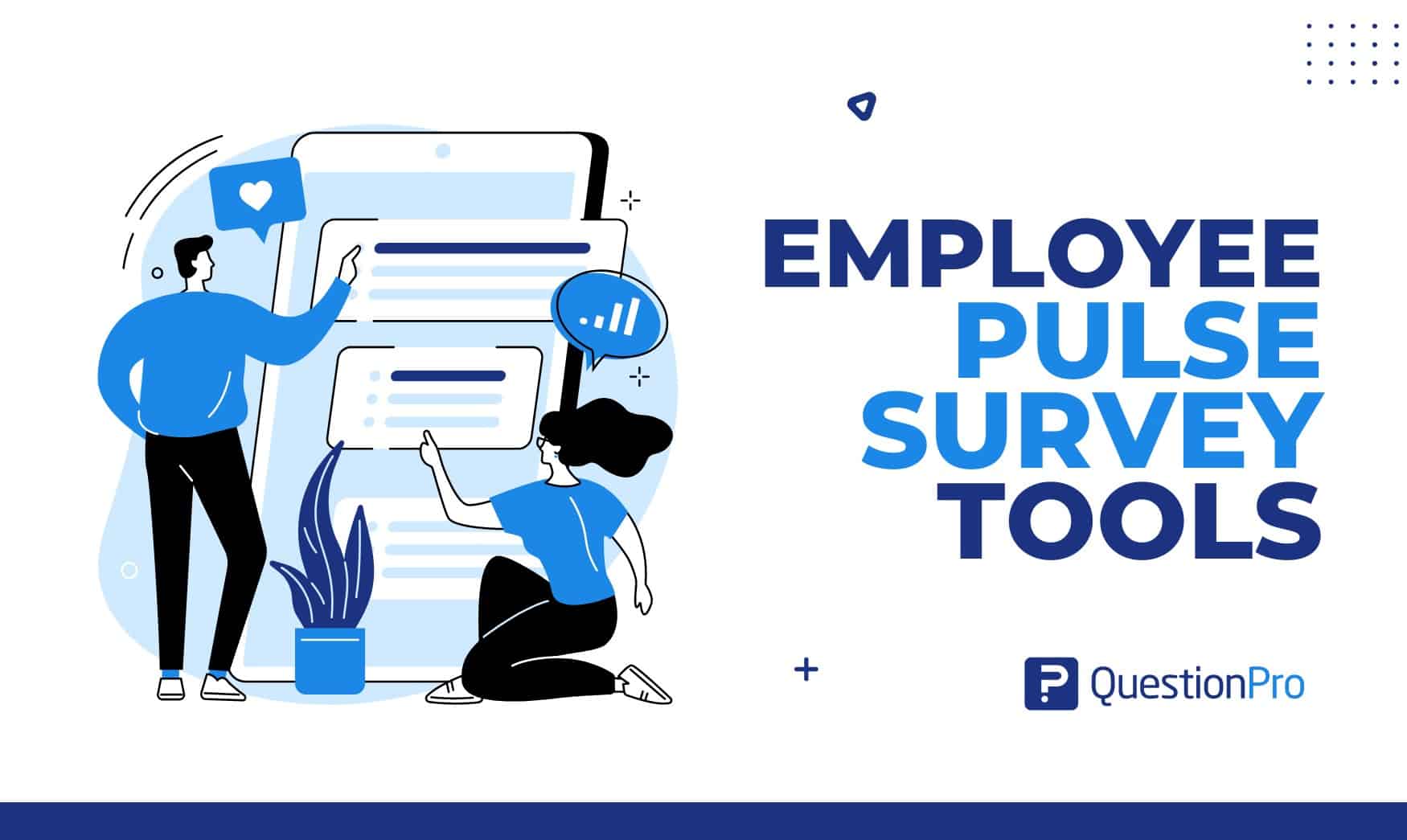
Understanding employee sentiments and fostering a culture of engagement is paramount for organizational success. Employee pulse survey tools have emerged as indispensable tools for gauging employee feedback, identifying areas for improvement, and driving positive change within companies.
Employee pulse survey tools, such as employee survey software, are indispensable for organizations seeking to measure employee engagement and improve employee satisfaction effectively.
As we navigate the ever-evolving workplace environment in 2025, let’s explore the top 12 employee pulse survey tools instrumental in unlocking valuable insights and enhancing employee experiences.
What is an Employee Pulse Survey?
An Employee Pulse Survey tool is a software application or platform to facilitate the organization’s administration, collection, analysis, and reporting of anonymous employee pulse surveys.
These surveys are typically conducted frequently, often monthly or quarterly, to gather real-time employee feedback on their work environment, job satisfaction, organizational culture, and more.
Pulse survey tools offer customizable survey templates, real-time reporting and analytics, anonymous feedback options, integration with HR systems, and action-planning tools. They enable organizations to gauge employee sentiments, identify trends, and make data-driven decisions to improve employee engagement, satisfaction, and overall organizational performance.
How Do You Conduct a Pulse Survey?
Conducting a pulse survey involves several key steps:
Define Objectives
Determine the survey’s goals and objectives. Identify the specific areas you want to assess, such as employee satisfaction, engagement, organizational culture, or particular aspects of the work environment.
Design Survey Questions
Craft straightforward, concise questions that address the survey’s objectives. Keep the survey short and focused, with questions that are easy to understand and answer. Use a mix of multiple-choice, rating scales, and open-ended questions to gather quantitative and qualitative feedback.
Choose a Survey Tool
Select a suitable survey tool from the array of options available. Consider features, ease of use, customization options, and compatibility with your organization’s systems and processes. Popular survey tools include QuestionPro Workforce, SurveySparrow, Culture Amp, and Qualtrics.
Administer the Survey
Distribute the survey to employees using the chosen tool. This can be done via email, mobile apps, internal communication channels, or dedicated survey platforms. Ensure that the survey is accessible to all employees and that participation is voluntary. Emphasize the confidentiality and anonymity of responses to encourage honest feedback.
Analyze Results
Once responses are collected, analyze the data to identify trends, patterns, and areas for improvement. Use the reporting and analytics features provided by the survey tool to visualize the data and gain insights into employee sentiments. Look for common themes, disparities among different groups or departments, and correlations between survey responses.
Take Action
Use the insights gained from the survey to inform decision-making and drive action. Develop an action plan to address identified issues, capitalize on strengths, and improve employee experience.
Involve employees by soliciting their input on proposed solutions and initiatives. Communicate the survey results and planned actions to employees to demonstrate transparency and accountability.
Follow-Up
Monitor progress on the action plan and follow up with employees to ensure effective changes are implemented. Consider conducting follow-up surveys to track improvements and measure the impact of interventions over time.
Continuously iterate and refine the pulse survey process based on feedback and outcomes to ensure its effectiveness in driving employee engagement and satisfaction.
Features of Employee Pulse Survey Tools
Employee Pulse Survey tools offer a range of features designed to streamline the survey process and maximize the value of feedback. Here are some standard features:
- Customizable Survey Templates: Pulse survey tools provide pre-built templates or the ability to create custom surveys tailored to specific objectives or areas of interest. This flexibility allows organizations to design surveys that align with their unique needs and goals.
- Real-Time Reporting and Analytics: Pulse survey tools offer real-time reporting dashboards and analytics capabilities to track survey responses and visualize data. Organizations can monitor employee sentiments, identify trends, and track changes over time to inform decision-making.
- Anonymous Feedback Options: Many pulse survey tools allow employees to submit feedback anonymously. This anonymity encourages honest and candid responses, giving more accurate insights into employee perceptions and concerns.
- Integration with HR Systems: Pulse survey tools often integrate with existing HR systems, such as employee databases or performance management software. This integration streamlines data management processes and ensures survey results align with other HR metrics and initiatives.
- Action Planning and Follow-Up Tools: Some pulse survey tools include action planning and follow-up features. These tools help organizations translate survey insights into concrete actions, assign responsibilities, set timelines, and track progress on initiatives to address identified issues.
- Mobile Compatibility: Pulse survey tools are often mobile-friendly, allowing employees to participate in surveys conveniently from their smartphones or tablets. This accessibility ensures higher response rates and enables organizations to capture feedback from employees who may not have access to desktop computers.
- Reminder and Notification Features: Pulse survey tools may include features to send reminders and notifications to employees to complete surveys. These reminders help ensure high participation rates and timely data collection.
- Benchmarking and Comparative Analysis: Some pulse survey tools offer benchmarking capabilities, allowing organizations to compare their survey results against industry benchmarks or peer organizations.
This comparative analysis provides context and insights into how the organization’s performance compares to others in similar sectors or industries. - Security and Compliance: Pulse survey tools prioritize data security and compliance with relevant regulations, such as GDPR or HIPAA. They employ encryption, access controls, and other security measures to protect sensitive employee data and ensure confidentiality.
- Training and Support: Pulse survey tools often provide training resources, documentation, and customer support to help organizations maximize the platform’s value. This support ensures users have the knowledge and skills to use the tool and interpret survey results effectively.
Top 12 Employee Pulse Survey Tools for 2025
1. QuestionPro Workforce
QuestionPro Workforce is a comprehensive survey platform that empowers organizations to gather actionable employee insights. It offers advanced features for survey creation, distribution, and analysis, making it a top choice for businesses of all sizes.
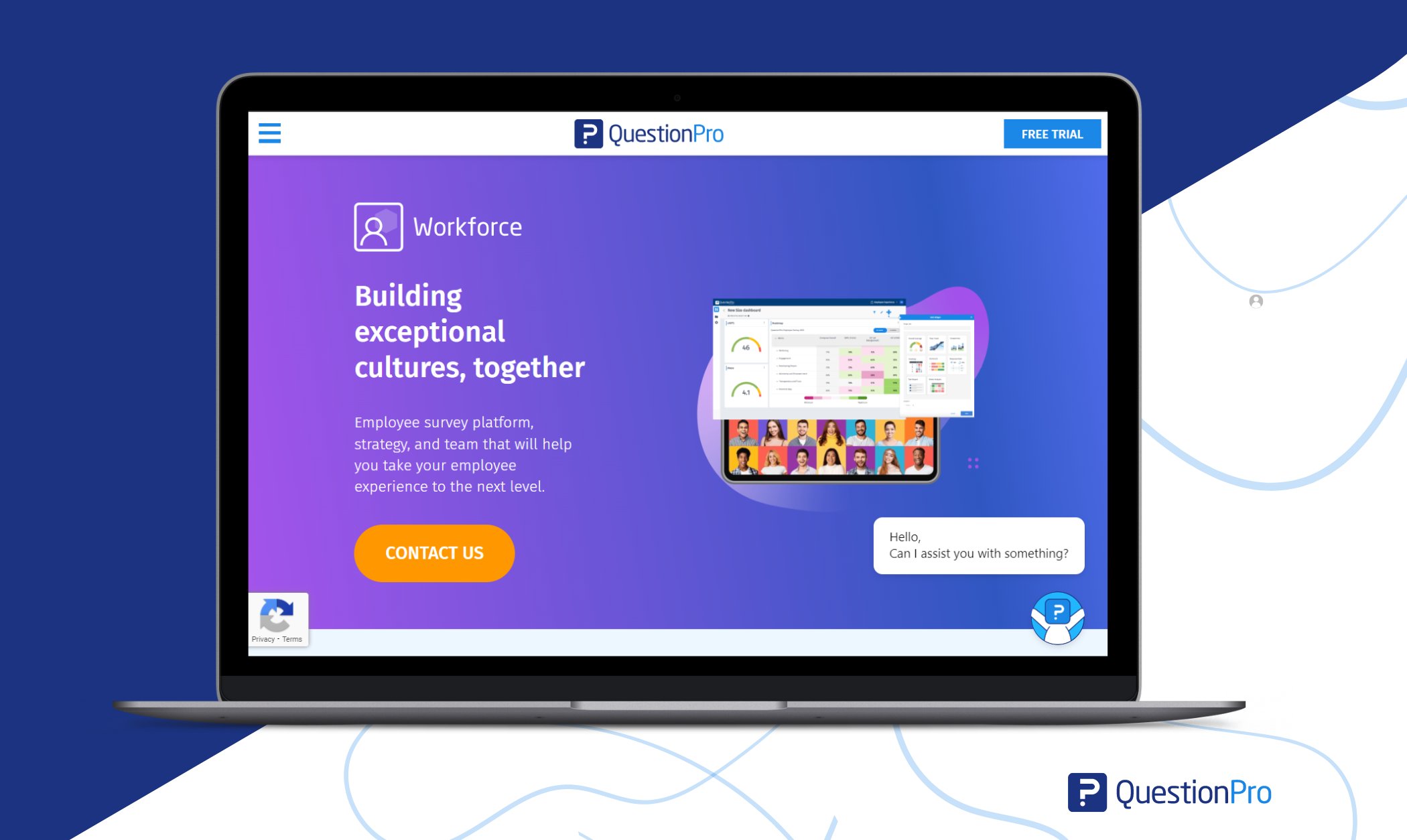
Features:
- Customizable survey templates
- Real-time reporting and analytics
- Predictive modeling for employee behavior
- Integration with HR systems
- Action planning tools
- Mobile compatibility
Pros:
- Advanced analytics capabilities
- Predictive modeling for proactive decision-making
- Robust integration options
- User-friendly interface
Cons:
- May have a steeper learning curve for beginners
- Higher price point compared to some other options
Price: Essentials is Free. Advanced is $99 per user/per month. Team Edition is $83 per user/per month. Contact QuestionPro for detailed pricing information.
2. SurveySparrow
SurveySparrow is known for its conversational survey interface and mobile-first approach. It offers a user-friendly employee engagement platform for creating engaging pulse surveys and collecting employee feedback.
Features:
- Conversational survey design
- Mobile compatibility
- Real-time reporting
- Anonymous feedback options
- Customizable survey templates
Pros:
- Engaging survey experience
- Easy to use
- Mobile-friendly design
Cons:
- Limited advanced analytics features
- May lack some customization options compared to other platforms
Price: SurveySparrow offers a free plan with limited features. Pricing is available upon request.
3. Culture Amp
Culture Amp specializes in employee engagement and performance management. It offers comprehensive survey solutions backed by powerful analytics to help organizations improve their workplace culture.
Features:
- Employee engagement surveys
- Performance management tools
- Real-time reporting
- Action planning
- Integration with HR systems
Pros:
- Focus on workplace culture and employee engagement
- Advanced analytics capabilities
- Actionable insights for organizational improvement
Cons:
- Higher price point
- May be more suitable for larger organizations
Price: Pricing is available upon request. Contact Culture Amp for detailed pricing information.
4. Culture Monkey
Culture Monkey is a newcomer in the pulse survey market, known for its user-friendly interface and customizable survey templates tailored to organizational culture.
Features:
- Customizable survey templates
- Real-time reporting
- Anonymous feedback options
- Action planning tools
Pros:
- User-friendly interface
- Focus on organizational culture
- Customization options
Cons:
- Limited track record compared to established providers
- May lack some advanced features
Price: Pricing details are not publicly available. Contact Culture Monkey for pricing information.
5. TINYpulse
TINYpulse specializes in collecting employee feedback and recognition. It offers features like peer-to-peer recognition and virtual suggestion boxes alongside pulse surveys.
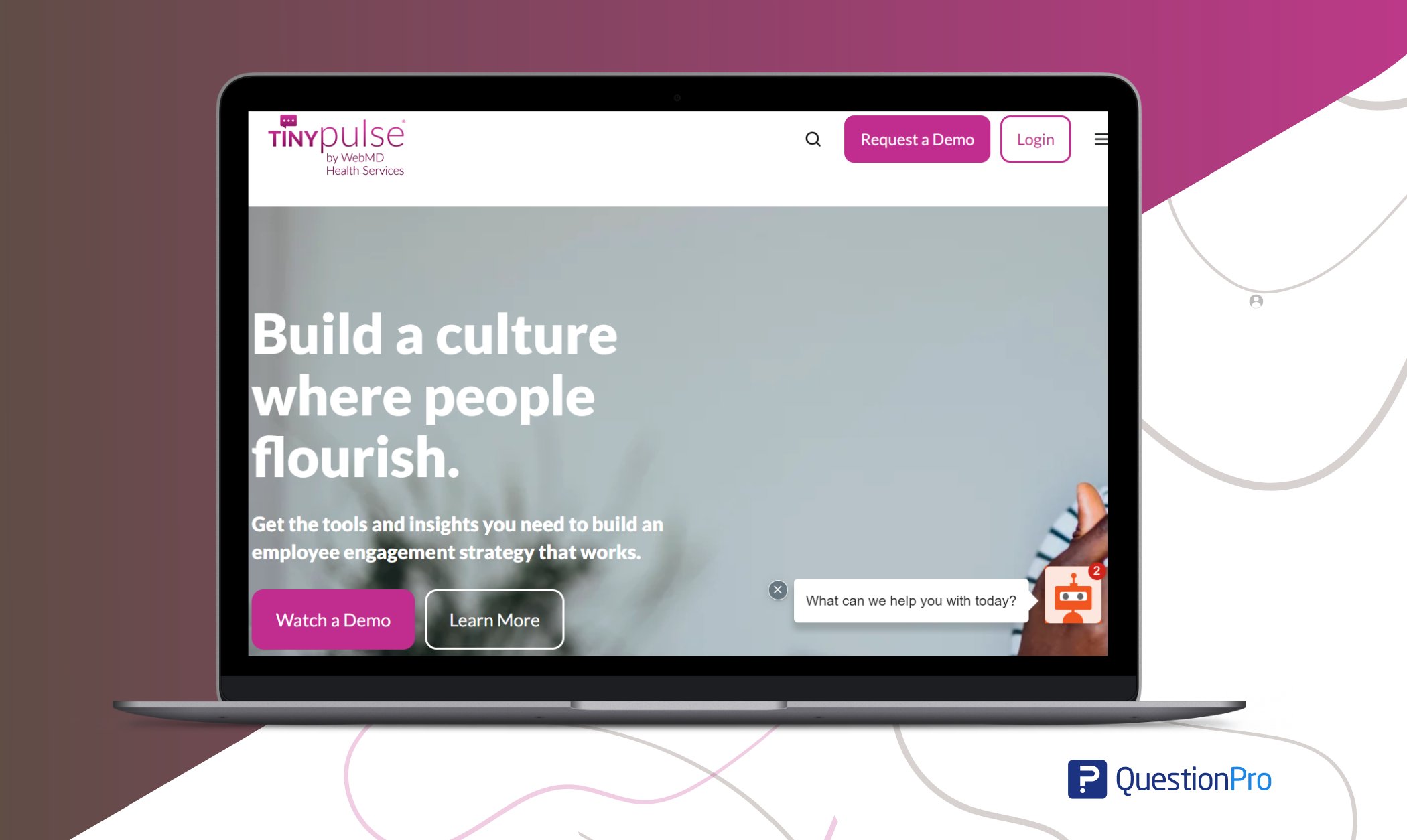
Features:
- Pulse surveys
- Peer-to-peer recognition
- Suggestion boxes
- Real-time feedback
Pros:
- Focus on employee recognition and feedback
- Easy to use
- Engaging features for employee participation
Cons:
- Limited analytics capabilities
- May lack some advanced survey features
Price: Pricing varies based on the number of users and features required. Contact TINYpulse for detailed pricing information.
6. 15Five
15Five combines pulse surveys with OKR tracking and performance management. It empowers organizations to collect employee feedback with strategic goals.
Features:
- Pulse surveys
- OKR tracking
- Performance management
- Real-time reporting
Pros:
- Integration with performance management tools
- Focus on goal alignment
- Real-time reporting
Cons:
- May have a steeper learning curve for beginners
- Higher price point compared to some other options
Price: Pricing starts at $4 per user per month and is available upon request. Contact 15Five for detailed pricing information.
7. OfficeVibe
OfficeVibe emphasizes employee well-being and organizational culture. It offers pulse surveys alongside wellness tips and team-building activities.
Features:
- Pulse surveys
- Employee well-being resources
- Team-building activities
- Real-time reporting
Pros:
- Focus on employee well-being
- Engaging features for team building
- Real-time reporting
Cons:
- May lack some advanced analytics features
- Higher price point
Price: Pricing starts at $3.50 per person/per month. Contact OfficeVibe for more pricing information.
8. Qualtrics
Qualtrics is renowned for its enterprise-grade survey platform. It provides robust analytics and customization options for organizations of all sizes.
Features:
- Customizable survey templates
- Advanced analytics
- Integration with HR systems
- Action planning tools
Pros:
- Advanced analytics capabilities
- Robust customization options
- Integration with other business systems
Cons:
- Higher price point
- May be more complex to use for beginners
Price: Pricing details are not publicly available. Contact Qualtrics for pricing information.
9. Glint
Glint is acclaimed for its AI-driven insights and predictive analytics. It helps organizations identify drivers of employee engagement and retention.
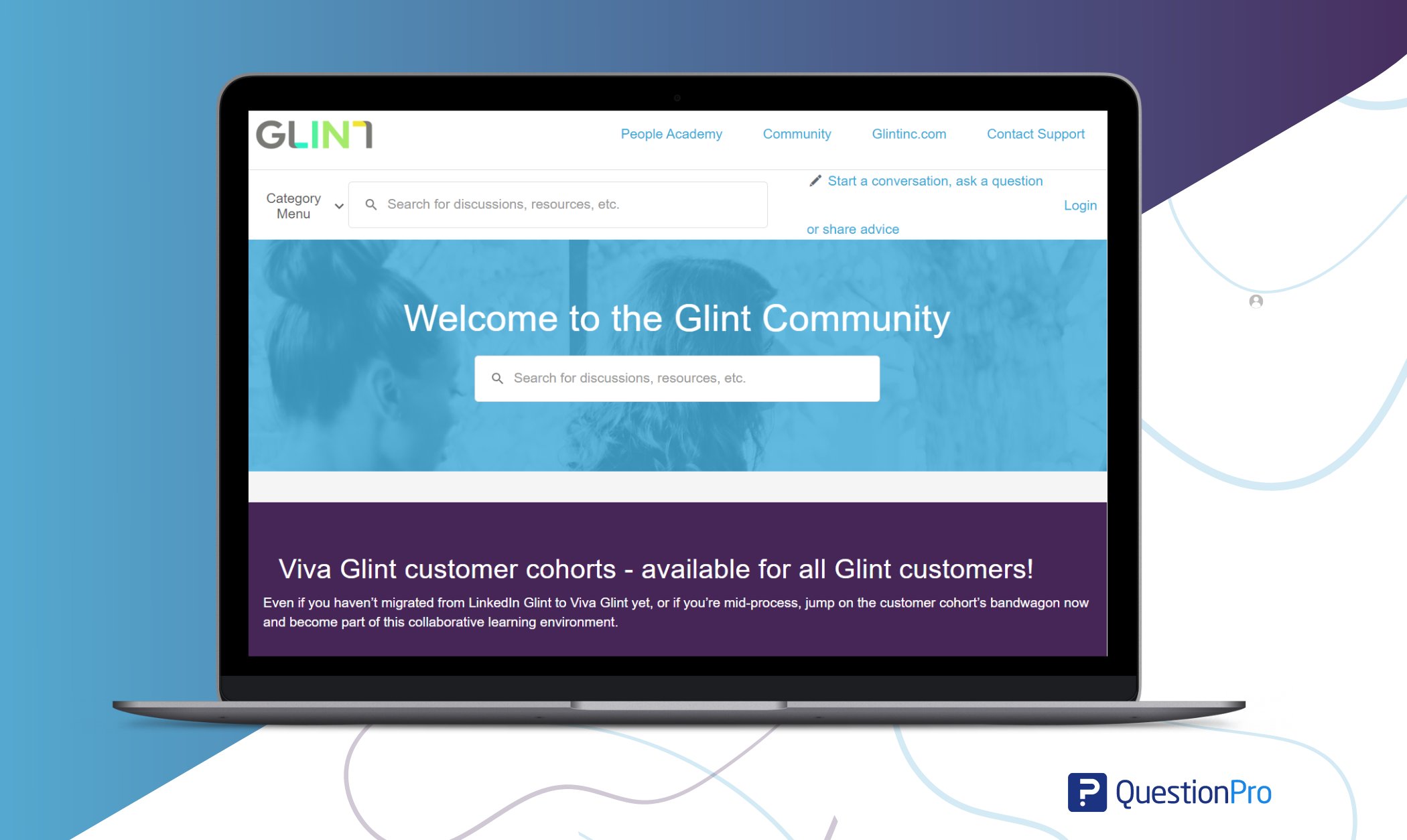
Features:
- AI-driven insights
- Predictive analytics
- Real-time reporting
- Action planning tools
Pros:
- Advanced analytics capabilities
- Predictive modeling for proactive decision-making
- Actionable insights for improving engagement
Cons:
- Higher price point
- May be more suitable for larger organizations
Price: Pricing details are not publicly available. Contact Glint for pricing information.
10. Vantage Pulse
Vantage Pulse offers a comprehensive suite of employee engagement tools, including pulse surveys, employee recognition, and performance management.
Features:
- Pulse surveys
- Employee recognition
- Performance management
- Real-time reporting
Pros:
- Comprehensive suite of engagement tools
- Focus on employee recognition
- Real-time reporting
Cons:
- Limited customization options
- Higher price point
Price: Pricing details are not publicly available. Contact Vantage Pulse for pricing information.
11. Weekdone
Weekdone focuses on goal-setting and progress tracking. It allows employees to share updates and feedback in a collaborative environment.
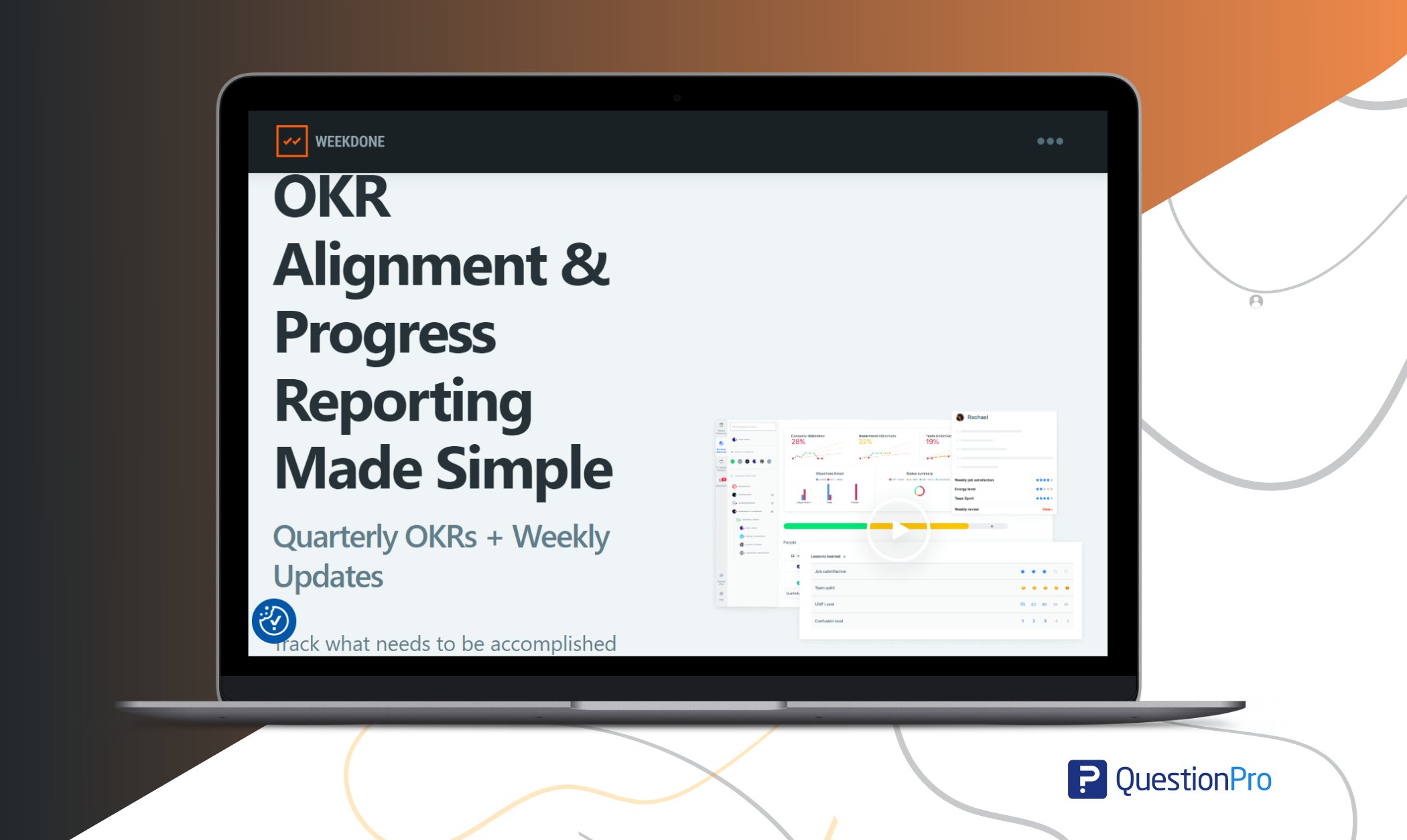
Features:
- Goal-setting tools
- Progress tracking
- Collaboration features
- Real-time reporting
Pros:
- Focus on goal alignment
- Collaboration
- User-friendly interface
Cons:
- Limited to goal-setting and progress tracking
- May lack some advanced survey features
Price: $162 per month, billed monthly 15-user package, at $10.80 per user.
12. ThriveSparrow
ThriveSparrow focuses on employee well-being and resilience. It offers pulse surveys alongside resources for mental health and stress management.
Features:
- Pulse surveys
- Well-being resources
- Stress management tools
- Real-time reporting
Pros:
- Focus on employee well-being
- Comprehensive resources for mental health support
- Real-time reporting
Cons:
- Limited customization options
- Higher price point
Price: Price starts at $2 per month/employee. Contact ThriveSparrow for more pricing information.
Benefits of Employee Pulse Survey Tools
Employee Pulse Survey Tools offer many benefits for organizations looking to enhance employee engagement, satisfaction, and overall performance. Here are some of the key benefits:
- Real-Time Feedback: Pulse surveys provide organizations real-time feedback on various aspects of the employee experience. This allows them to stay informed about employee sentiments, concerns and needs on an ongoing basis, rather than waiting for annual or bi-annual surveys.
- Identifying Areas for Improvement: Organizations can quickly identify workplace improvement areas by regularly collecting feedback through pulse surveys. Whether it’s issues related to communication, leadership, work-life balance, or organizational culture, pulse surveys help pinpoint areas that need attention.
- Enhanced Employee Engagement: Engaged employees are more likely to be productive, motivated, and committed to their work. Pulse surveys give employees a voice and make them feel heard, fostering engagement and ownership in the organization’s success.
- Driving Organizational Change: Pulse surveys provide valuable insights that can inform strategic decision-making and drive organizational change. By analyzing survey data, leaders can make informed decisions about policies, practices, and initiatives to improve the employee experience and organizational culture.
- Increased Accountability: Implementing pulse surveys demonstrates a commitment to organizational transparency and accountability. When employees see that their feedback is taken seriously and acted upon, they are more likely to feel valued and engaged.
- Improved Communication: Pulse surveys serve as a channel for open and transparent communication between employees and management. They allow employees to voice their opinions, share feedback, and confidently express concerns.
- Enhanced Employee Well-Being: Pulse surveys can include employee well-being, stress levels, and work-life balance questions. By monitoring these factors regularly, organizations can proactively identify and address issues that may impact employee health and wellness.
- Retention and Recruitment: A positive employee experience, fostered partly by effective pulse surveys, can contribute to higher employee retention rates. Satisfied employees are more likely to stay with the organization, reducing turnover costs and preserving institutional knowledge.
A reputation for prioritizing employee feedback and well-being can enhance an organization’s attractiveness to prospective employees. - Data-Driven Decision-Making: Pulse surveys provide organizations with valuable data and insights to inform decision-making at all levels. By leveraging survey data, leaders can make data-driven decisions about resource allocation, training and development initiatives, performance management strategies, and more.
- Continuous Improvement Culture: Implementing pulse surveys signals a commitment to a culture of constant improvement within the organization. By regularly soliciting feedback and acting upon it, organizations can foster a culture of learning, innovation, and adaptability.
How can QuestionPro Workforce help in the Employee Pulse Survey?
QuestionPro Workforce offers a range of features and capabilities that can significantly enhance the effectiveness of employee pulse survey software. Here’s how QuestionPro Workforce can help:
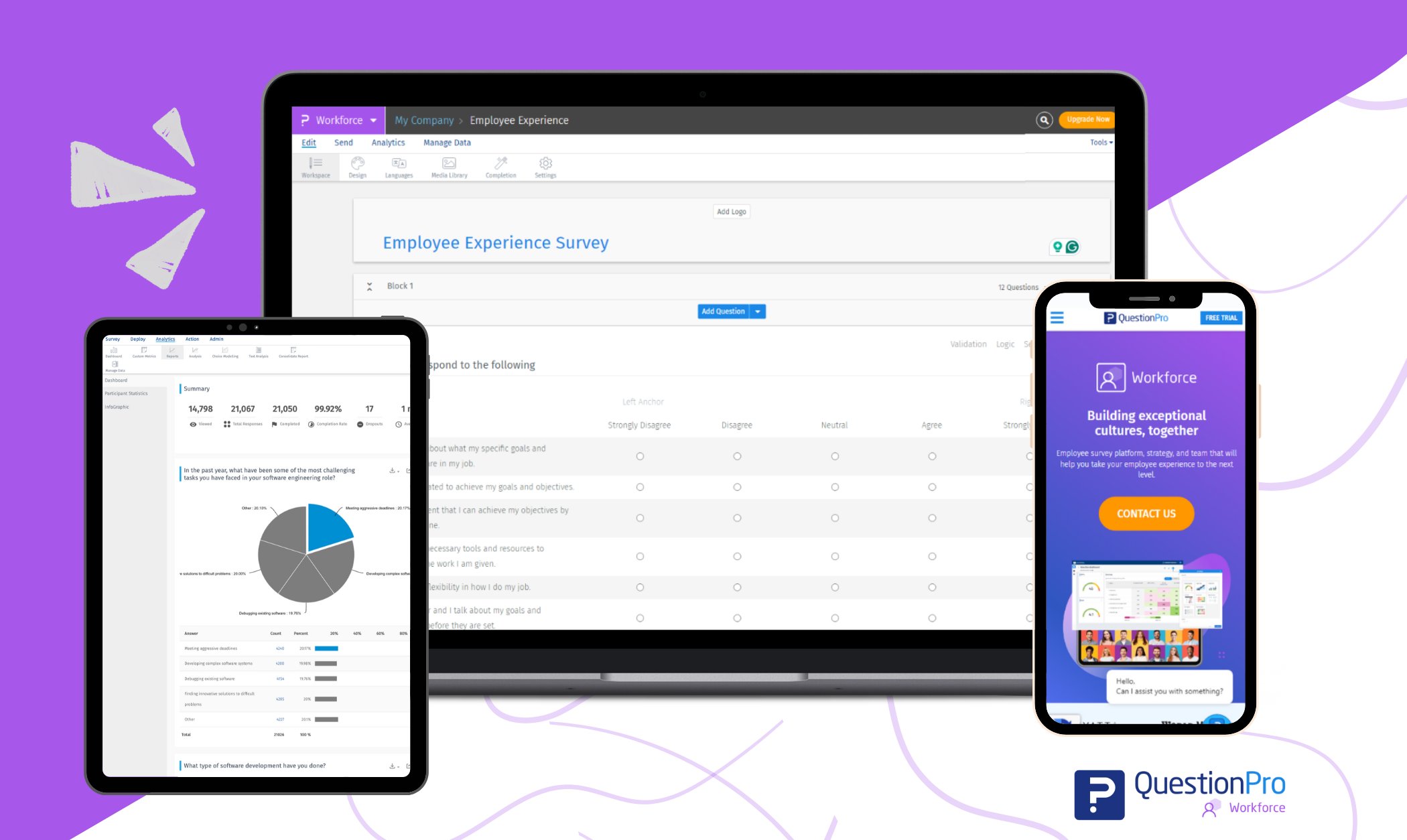
1. Advanced Survey Creation
QuestionPro Workforce provides a user-friendly interface for creating customized pulse surveys tailored to specific objectives and areas of interest. With its intuitive survey builder, organizations can easily design surveys with various question types, including multiple-choice, rating scales, and open-ended questions.
2. Real-Time Reporting and Analytics
QuestionPro Workforce offers robust reporting and analytics tools that enable organizations to track real-time survey responses and gain actionable insights. The platform provides customizable dashboards, data visualization tools, and advanced analytics capabilities, allowing users to identify trends, patterns, and correlations within the survey data.
3. Predictive Modeling
One of QuestionPro Workforce’s standout features is its predictive modeling capabilities. The platform can analyze historical survey data to predict future employee behaviors and trends by leveraging advanced analytics and machine learning algorithms.
This allows organizations to proactively identify potential issues, anticipate employee needs, and implement targeted interventions to drive positive outcomes.
4. Integration with HR Systems
QuestionPro Workforce seamlessly integrates with existing HR systems, such as employee databases and performance management software. This integration ensures that survey data is synchronized with other HR metrics and initiatives, providing a holistic view of the employee experience and organizational performance.
5. Action Planning Tools
QuestionPro Workforce provides action planning and follow-up tools, enabling organizations to translate survey insights into concrete actions and initiatives. The platform allows users to prioritize initiatives, assign responsibilities, set timelines, and track progress on action items, ensuring that feedback is effectively acted upon.
6. Mobile Compatibility
QuestionPro Workforce is mobile-friendly, allowing employees to participate in surveys conveniently from their smartphones or tablets. This accessibility ensures higher response rates and enables organizations to capture feedback from employees who may not have access to desktop computers.
7. Security and Compliance
QuestionPro Workforce prioritizes data security and compliance with relevant regulations like GDPR and HIPAA. The platform employs encryption, access controls, and other security measures to protect sensitive employee data and ensure confidentiality.
Conclusion
Employee Pulse Survey Tools enhance and measure employee engagement, satisfaction, and organizational performance. By leveraging these tools, organizations can gather actionable insights, drive continuous improvement, and foster a culture of transparency and accountability.
Choose the right pulse survey tool to unlock the full potential of your employee feedback and drive positive change within your organization.
QuestionPro Workforce provides organizations with a comprehensive suite of tools and capabilities to streamline the Employee Pulse Survey process, gather actionable insights, and drive continuous improvement in employee engagement, satisfaction, and organizational performance.
By leveraging its advanced features, organizations can effectively measure employee sentiment, identify areas for improvement, and implement targeted interventions to enhance the employee experience.
Frequently Asked Questions (FAQs)
A: Employee pulse surveys are frequent, short surveys designed to quickly gather employee feedback on various aspects of their work experience.
A: Pulse surveys are typically conducted monthly or quarterly to provide timely insights into employee sentiments.
A: Essential features include customizable survey templates, real-time analytics, anonymous feedback options, and integration with existing HR systems.
A: Pulse surveys help organizations identify areas for improvement, act on feedback promptly, and show employees that their opinions are valued.
A: Real-time reporting and analytics allow organizations to monitor trends and make data-driven decisions to swiftly address issues and enhance the work environment.







